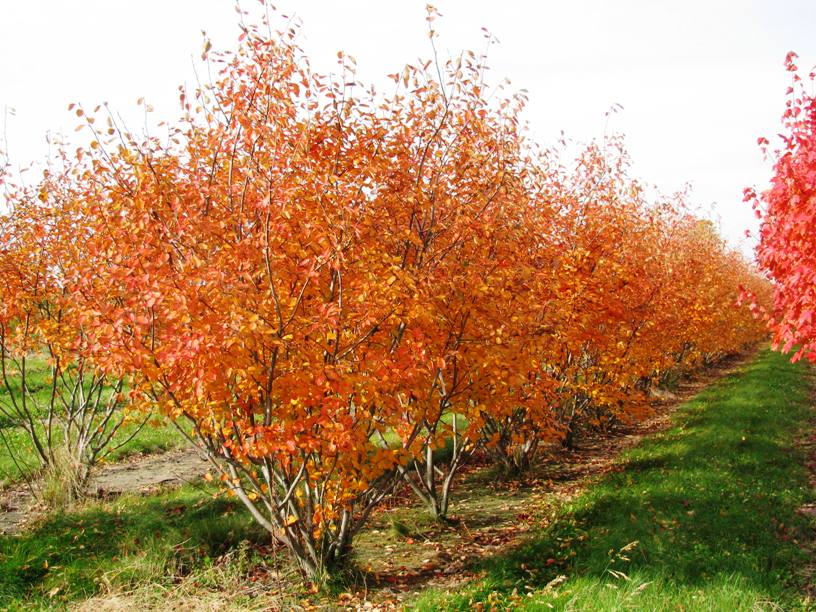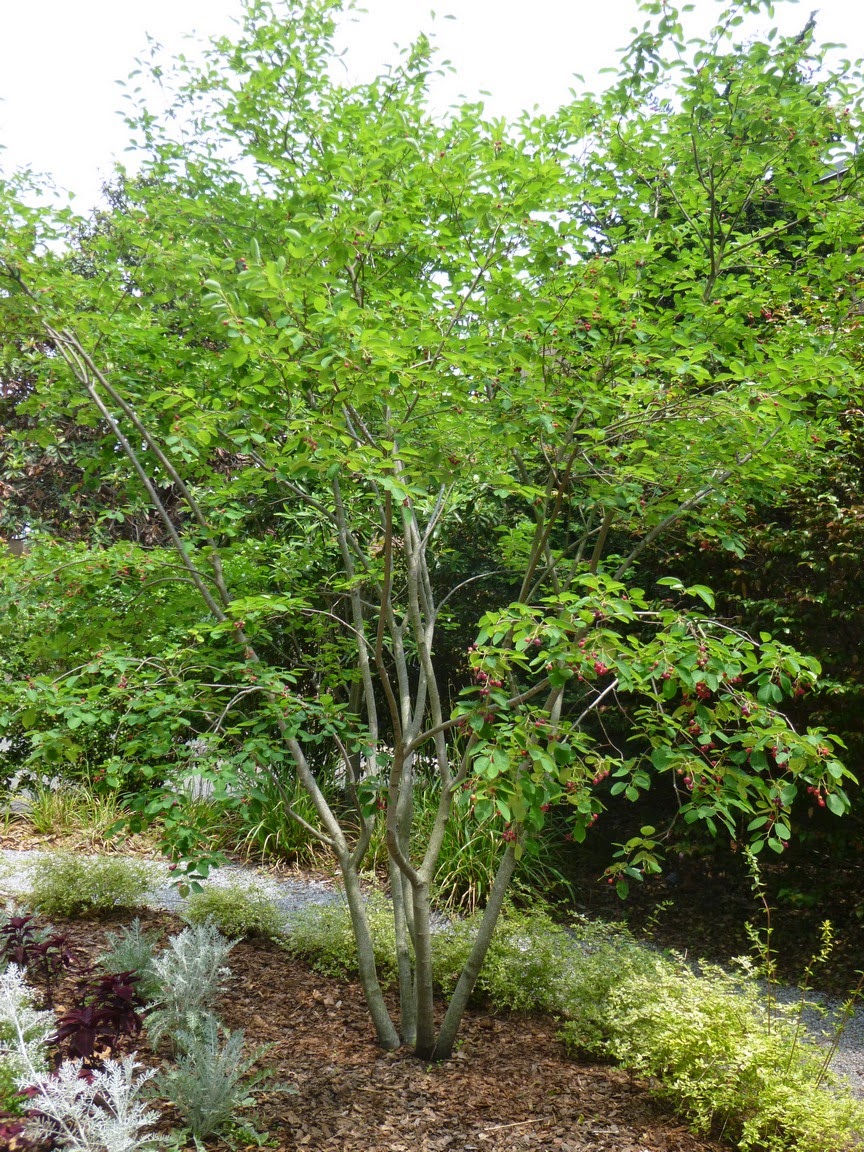

The inflorescences are terminal, with 1–20 flowers, erect or drooping, either in clusters of one to four flowers, or in racemes with 4–20 flowers. The leaves are deciduous, cauline, alternate, simple, lanceolate to elliptic to orbiculate, 0.5–10 x 0.5–5.5 cm, thin to coriaceous, with surfaces above glabrous or densely tomentose at flowering, and glabrous or more or less hairy beneath at maturity. The bark is gray or less often brown, and in tree species smooth or fissuring when older.

The various species of Amelanchier grow to 0.2–20 m tall some are small trees, some are multistemmed, clump-forming shrubs, and yet others form extensive low shrubby patches ( clones). A major source of complexity comes from the occurrence of hybridization, polyploidy, and apomixis (asexual seed production), making species difficult to characterize and identify. The taxonomic classification of shadbushes has long perplexed botanists, horticulturalists, and others, as suggested by the range in number of species recognized in the genus, from 6 to 33, in two recent publications. Two species also occur in Asia, and one in Europe. state except Hawaii and to every Canadian province and territory. It is most diverse taxonomically in North America, especially in the northeastern United States and adjacent southeastern Canada, and at least one species is native to every U.S. For the artist, see June Berry.Īmelanchier ( / æ m ə ˈ l æ n ʃ ɪər/ am-ə- LAN-sheer), also known as shadbush, shadwood or shadblow, serviceberry or sarvisberry (or just sarvis), juneberry, saskatoon, sugarplum, wild-plum or chuckley pear, is a genus of about 20 species of deciduous-leaved shrubs and small trees in the rose family ( Rosaceae).Īmelanchier is native to temperate regions of the Northern Hemisphere, growing primarily in early successional habitats.


 0 kommentar(er)
0 kommentar(er)
